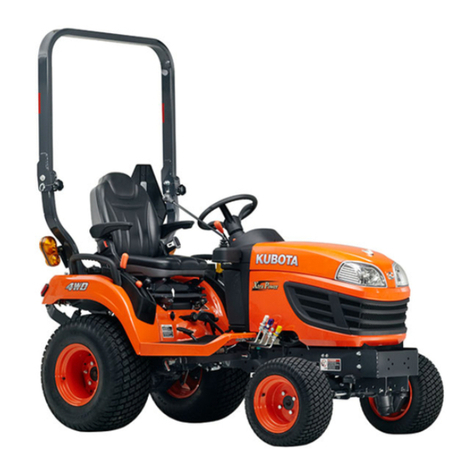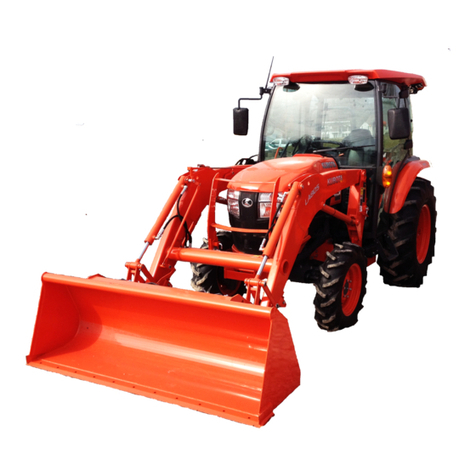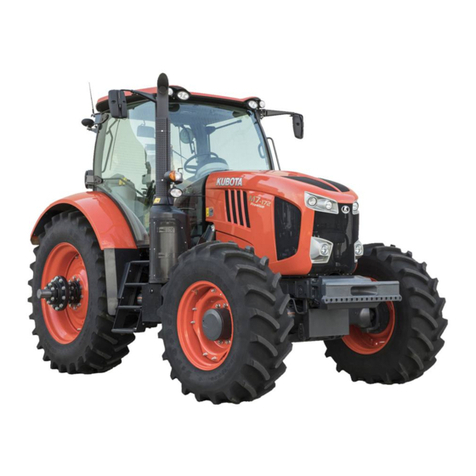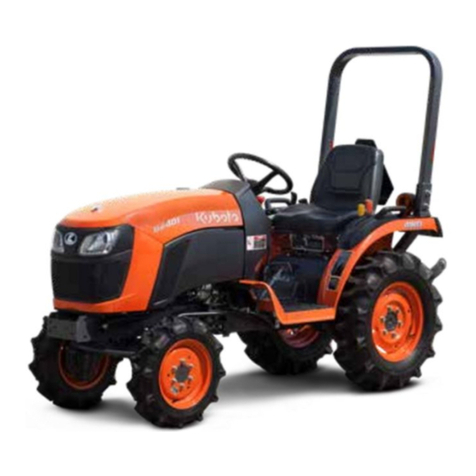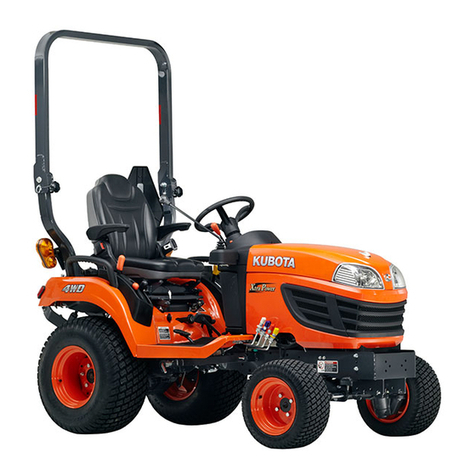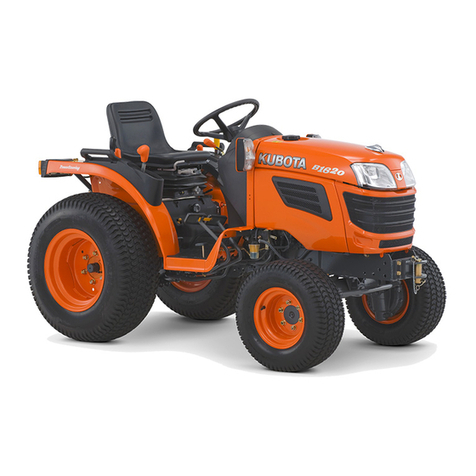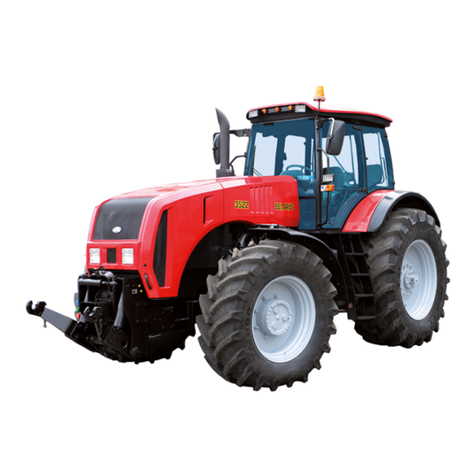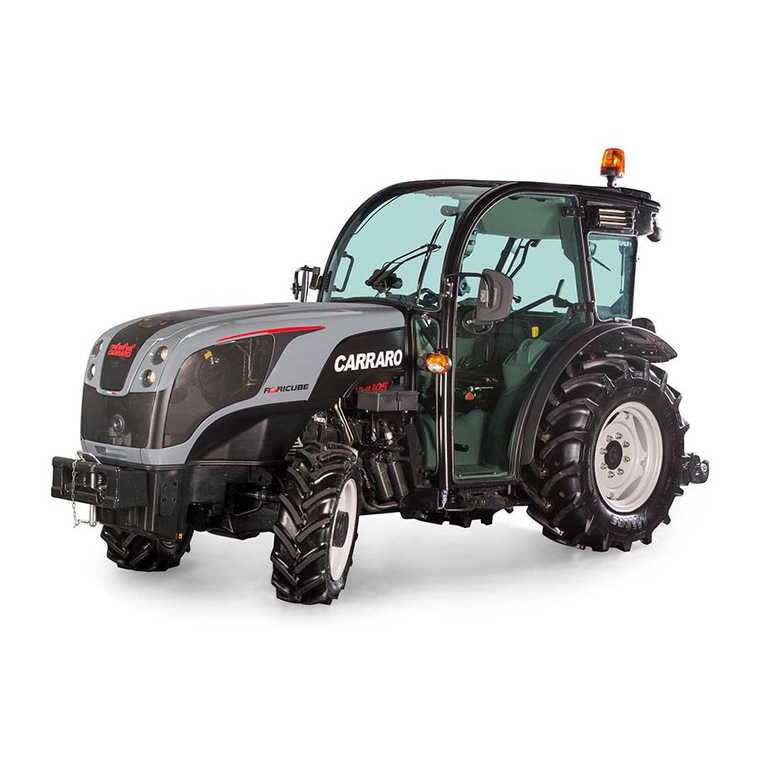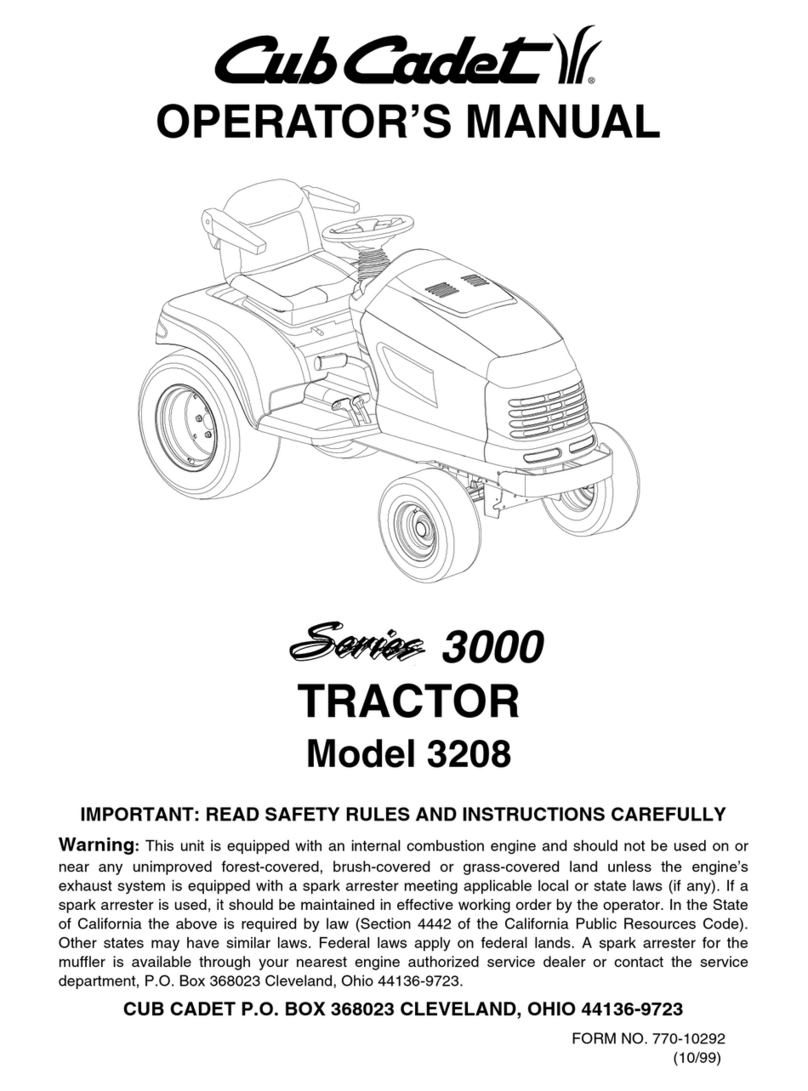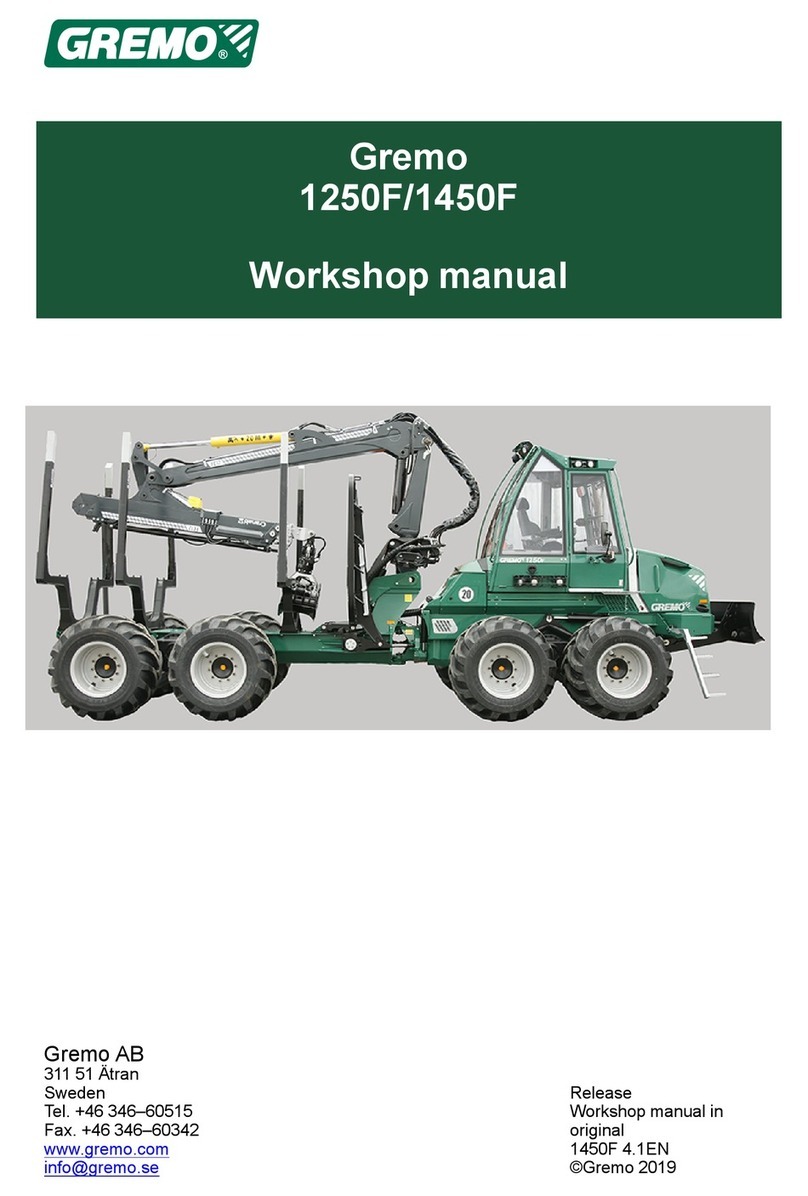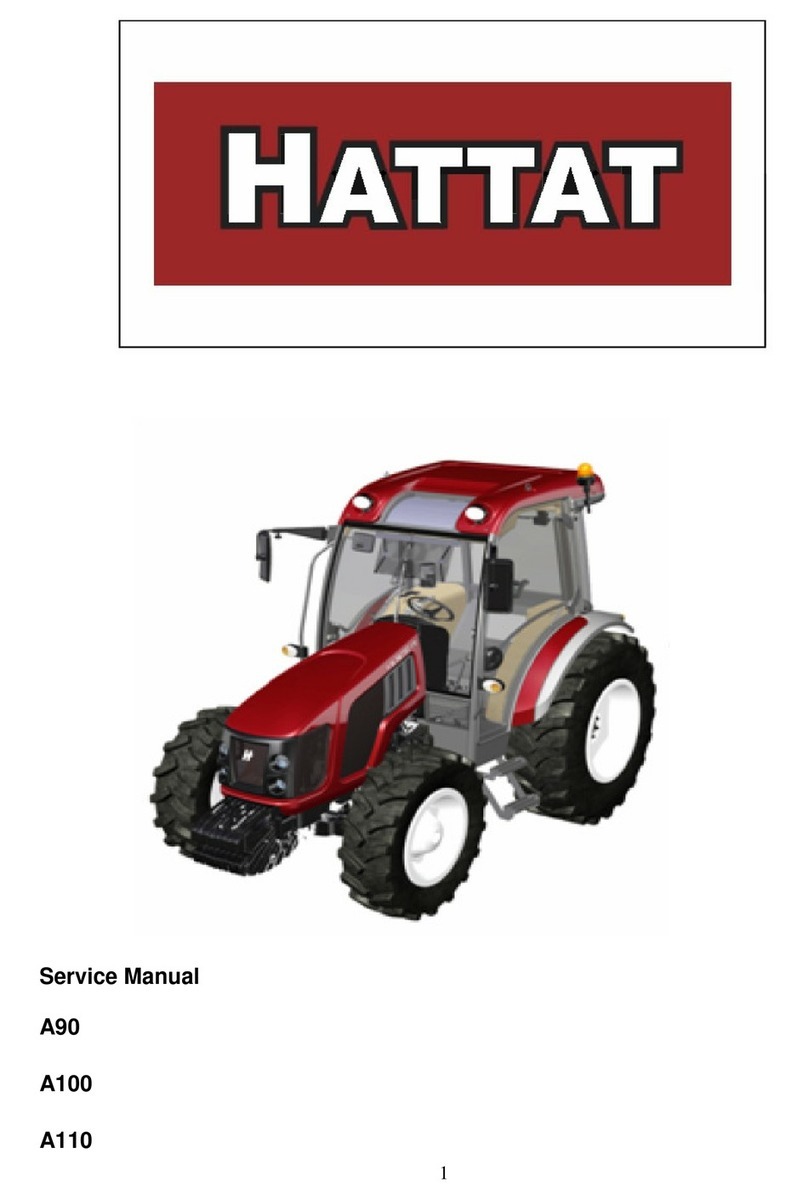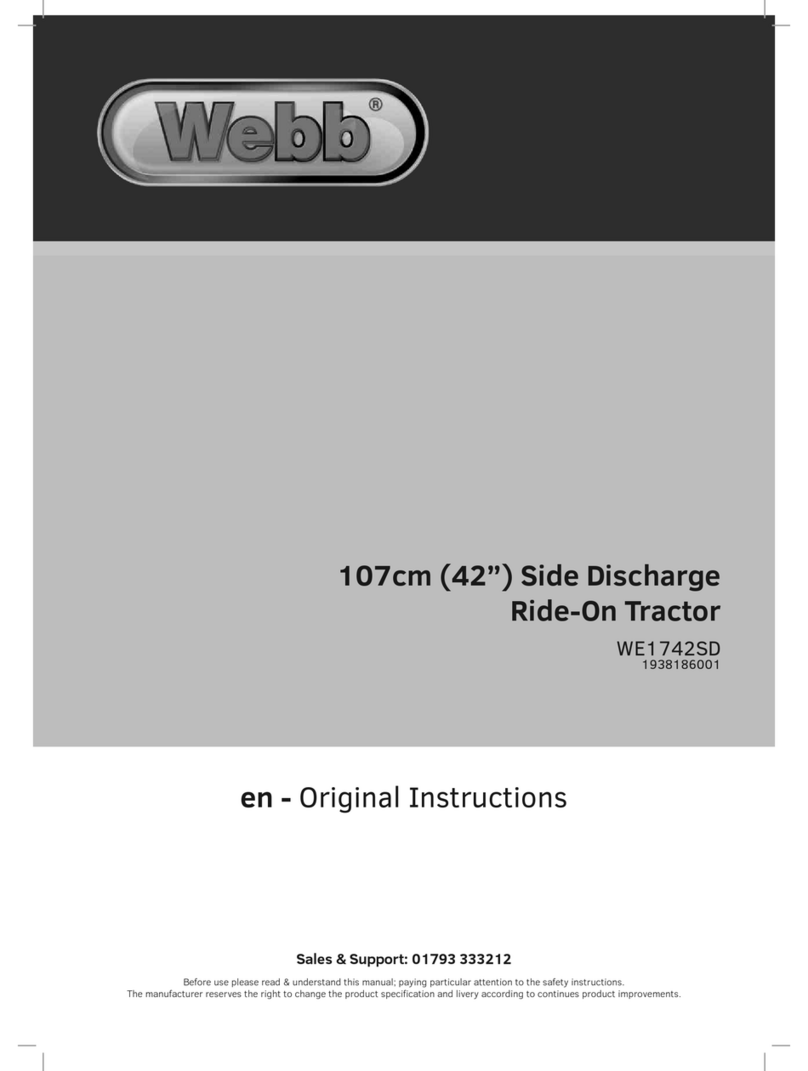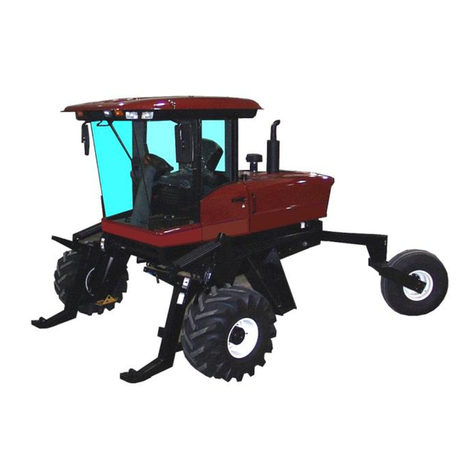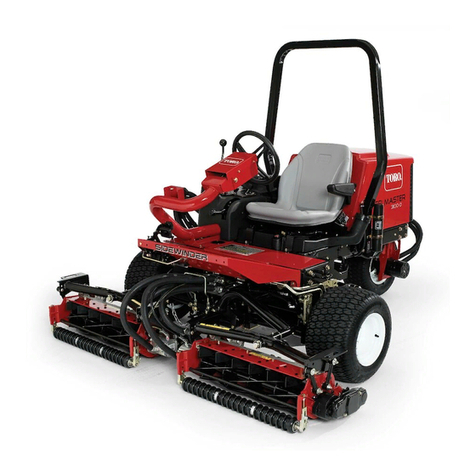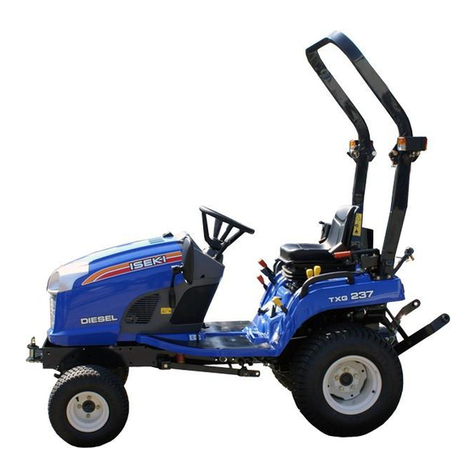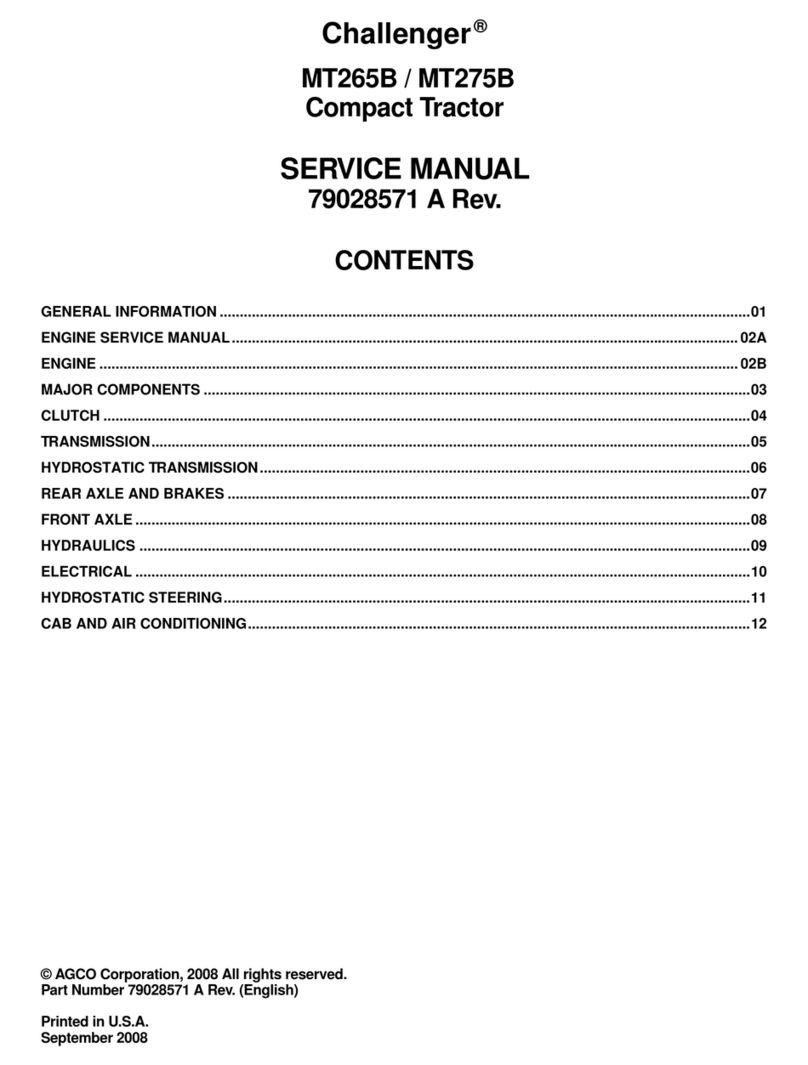
SAFE OPERATION
Careful operation is your best insurance against an
accident.
Read and understand this manual carefully before
operating the tractor.
All operators, no matter how much experience they
may have, should read this and other related manuals
before operating the tractor or any implement attached
to it. It is the owner's obligation to instruct all operators
in safe operation.
PRECAUTIONS BEFORE
OPERATING THE TRACTOR
Know your equipment and its limitations.
Read this entire manual before attempting to start and
operate the tractor.
1. General precautions
• Pay special attention to the safety labels on the
tractor.
• Do not operate the tractor or any implement
attached to the tractor while under the influence of
alcohol, medication, controlled substances, or while
you are fatigued.
• Carefully check the vicinity of the tractor before
operating it or any implement attached to it. Do not
allow any bystander around or near the tractor
during operating it.
• Before allowing other people to use your tractor,
explain them how to operate it and have them read
this manual before operating it.
• Never wear loose, torn, or bulky clothing around the
tractor. Loose, torn, or bulky clothing may catch on
moving parts or controls, leading to the risk of an
accident. Use additional safety items: hard hat,
safety boots or shoes, eye and hearing protection,
gloves, and so on, as appropriate or required.
• Do not allow passengers to ride on any part of the
tractor at anytime. The operator must remain in the
tractor seat during operating the tractor.
• Check brakes, clutch, linkage pins, and other
mechanical parts for improper adjustment and
wear. Replace worn or damaged parts promptly.
Check the tightness of all nuts and bolts regularly.
For further details, see SERVICE INTERVALS on
page 69.
• Keep your tractor clean. Buildups of dirt, grease,
and trash may contribute to fires and lead to
personal injury.
• Use only implements meeting the specifications
listed under IMPLEMENT LIMITATION TABLES on
page 22, FRONT LOADER on page 26, and
WEIGHT OF THE IMPLEMENTS AS THE REAR
BALLAST on page 26, or implements approved by
KUBOTA.
• Use proper weights on the front or rear of the
tractor to reduce the risk of upsets. When using the
front loader, put an implement or ballast on the 3-
point hitch to improve stability. Follow the safe
operating procedures specified in the implement or
attachment manual.
• Do not modify the tractor. Unauthorized
modification may affect the function of the tractor,
which may result in personal injury.
2. Precautions for CAB and ROPS
KUBOTA recommends the use of a CAB or roll-over-
protective-structures (ROPS), and seat belt in almost
all applications. Combination of a CAB or ROPS and
seat belt will reduce the risk of serious injury or death if
the tractor should be upset.
• Check for overhead clearance which may interfere
with a CAB or ROPS.
• Set parking brake and stop engine. Remove any
obstructions that may prevent raising or folding the
ROPS. Do not allow any bystander. Always perform
functions of CAB or ROPS from a stable position at
the rear of the tractor. Hold the top of the ROPS
securely when raising or folding it. Make sure that
all pins are installed and locked.
• If the CAB or ROPS is loosened or removed for any
reason, make sure that all parts are reinstalled
correctly before operating the tractor.
• Never modify or repair any structural member of a
CAB or ROPS because welding, bending, drilling,
grinding, or cutting it may weaken the structure.
• If any structural member of the CAB or ROPS is
damaged, replace the entire structure at your local
KUBOTA Dealer.
• If the tractor is equipped with a foldable ROPS, you
may fold down it temporarily only when absolutely
necessary to fold down it for areas with constraints
on height.
There is no protection of operator provided by the
ROPS in the folded position. For operator safety,
you should place the ROPS in the upright and
locked position and fasten the seat belt for all other
operations.
• Always use the seat belt if the tractor is equipped
with a CAB or ROPS.




